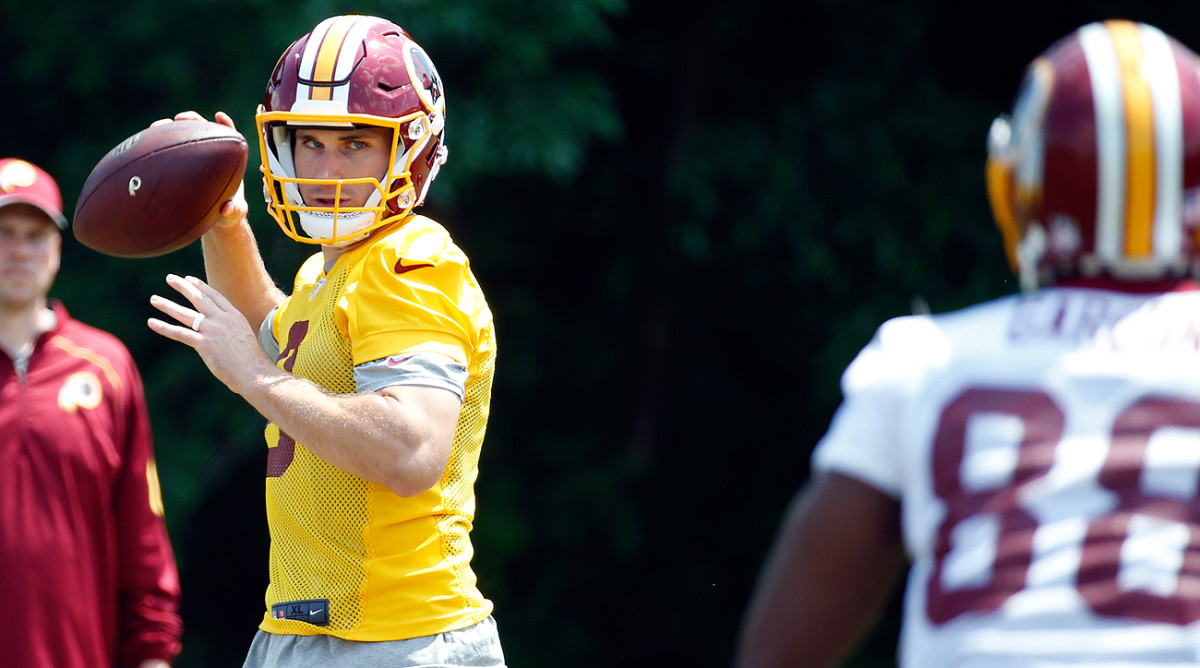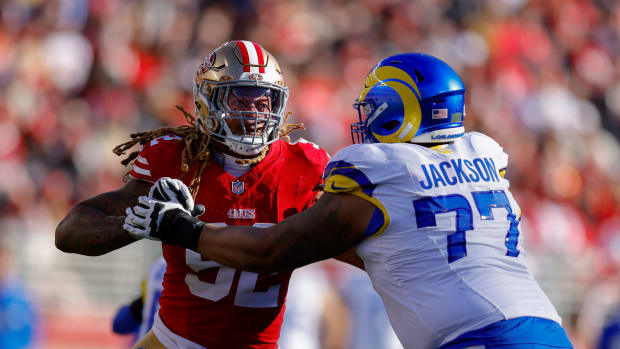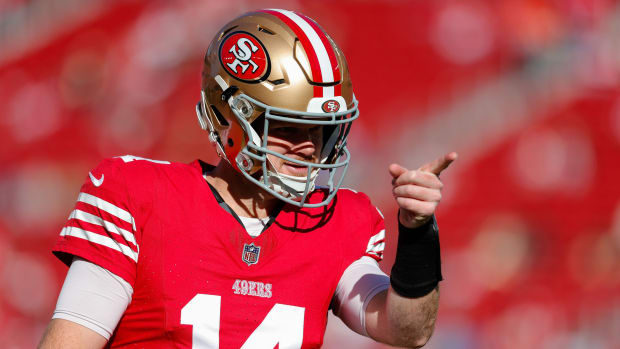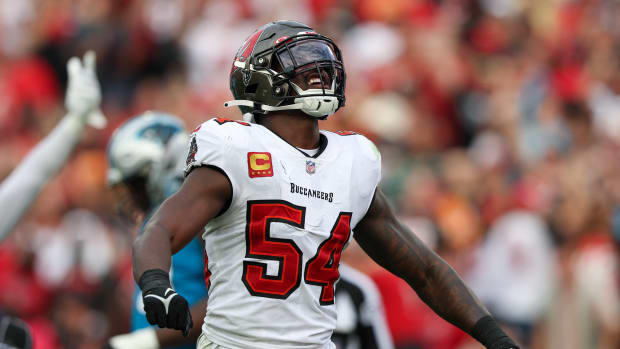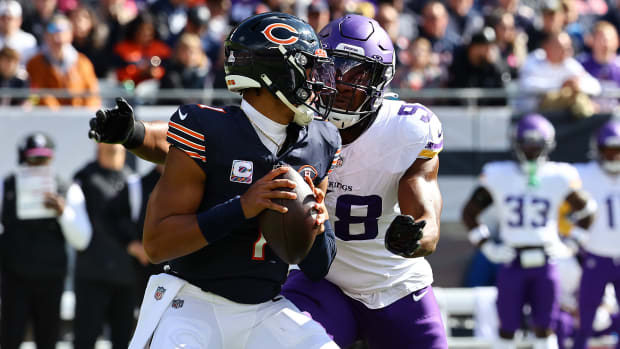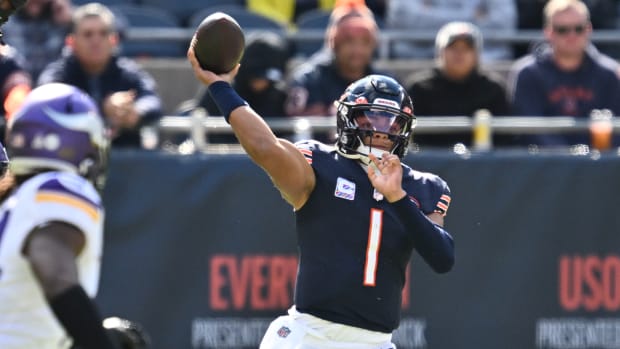Washington’s Wide Appeal
ASHBURN, Va. — Josh Norman seemed frazzled after the second day of Washington’s first week of OTAs, during which temperatures peaked in the mid-80s and players participated in lively 7-on-7 passing scenarios without pads. For the first time, Norman pulled a burgundy and white No. 24 jersey over his shoulders and saw his new team’s offense in action.
“They’re quick, and they’re shifty guys—sh-shh-shh,” the former Panthers cornerback says of Washington’s receivers, making a chopping motion with his hands for emphasis. “God almighty, they’re shifty. We had some shifty guys in Carolina, but you come here and it’s something different. I’ve got to come out extra prepared for camp.”
On paper, Washington boasts one of the most exciting groups of offensive playmakers in football for the first time in decades. The 2015 season saw the emergence of tight end Jordan Reed (87 catches, 952 yards, 11 touchdowns) and wide receiver Jamison Crowder, who in his first season out of Duke broke Art Monk’s team rookie record for receptions with 59 catches for 604 yards from the slot. Adding first-round rookie Josh Doctson out of TCU to a group that also includes 29-year-olds Pierre Garcon and DeSean Jackson was a head-scratcher to some, given Washington’s needs on defense.
“I was keeping track of the picks and it was surprising to see them pick a receiver. It caught everybody by surprise,” says Crowder, who doesn’t watch the draft on television because of the nerve-wracking experience he had as a fourth-round pick last year. “Now that we’re here, we want to be the best receiving corps in the league. That’s what we’re working for. We each have very unique traits.”
Norman says the group reminds him of the Saints teams he faced twice a season in the NFC South for four years. As recently as 2014 the Saints boasted a 5,000-yard passing offense with a coverage-busting tight end (Jimmy Graham), a shifty slot producer (Brandin Cooks), a big-possession receiver (Marques Colston) and a consistent deep threat (Kenny Stills). They’re roughly the same traits that define Washington’s starting four at the moment: Reed, Crowder, Garcon and Jackson.
Molding this group into a consistently productive offense is the challenge facing rising star coordinator Sean McVay, coach Jay Gruden and quarterback Kirk Cousins, who is perhaps the biggest question mark in the equation. After accepting his franchise tender this offseason, Cousins enters a prove-it 2016 on the heels of a hot regular-season finish against some defenses of questionable proficiency. One thing stood out about Cousins in the second half of 2015, in which he threw 19 touchdowns and two interceptions and Washington lost just two games: he loves attacking the middle of the field ... but his outside game needs work.

Washington added first-rounder Josh Doctson to an already deep corps of receivers.
John McDonnell / The Washington Post via Getty Images
In Washington’s last loss of the regular season, against the Cowboys in Week 13, three of four attempts beyond 10 yards and outside of the field numbers fell flat. In the first half, Cousins overthrew Jackson on a deep fly down the left sideline and forced an ill-advised ball to a double-covered Jordan Reed down the left seam. During a big fourth-quarter possession, he missed Garcon down the left sideline though the receiver had a step on Morris Claiborne.
Two weeks later, however, Cousins put on a clinic against a Bills defense that finished the season, like the Cowboys, in the middle of the pack. In the same area of the field—beyond 10 yards and outside the field numbers—Cousins hit DeSean Jackson for 28, 27 and 77 yards down the sidelines on a seam, a stop-and-go, and a play-action fly route that would’ve made Drew Brees blush.
This week-to-week inconsistency factored into the identity of the offense, with a focus on route combinations putting primary receivers in the center of the field and near the hash marks. In 2016, Cousin’s ability to consistently open up the field and force defenses to commit safeties to boundary receivers is what’s going to take this group from a hypothetical league leader to an actual league leader. Without saying as much, Cousins knows it. “I’ll be the first one to say we have a lot of talent here,” he told reporters last week, “and it’s my job to get them the football and let them do the work.”
Astute observers will be watching for two things in the coming months: How quickly Doctson acclimates to a pro offense after running essentially two routes for a majority of his snaps at TCU (the fade and the fly), and, more important, how much trust McVay has in Cousins to incorporate out-breaking routes to an intermediate and deep passing game.
Having a healthy Jackson for an entire season should provide some needed continuity. And an improved offensive line that fielded four first-year starters a year ago should alleviate some of the troubles Cousins faced against the blitz. But that’s all projection. What we know now is that Washington has the ingredients for a vastly improved passing game, if not a proven recipe.
“The only thing I’ve seen in this short time out of them is dink and dunk,” Norman says, “I’m sure they’re going to open it up. I could see them doing a lot of what New Orleans does, quick stuff and taking shots off of play-action. It could be special, but it’s so premature. We’ll just have to see.”
• Question or comment? Email us at talkback@themmqb.com.
































